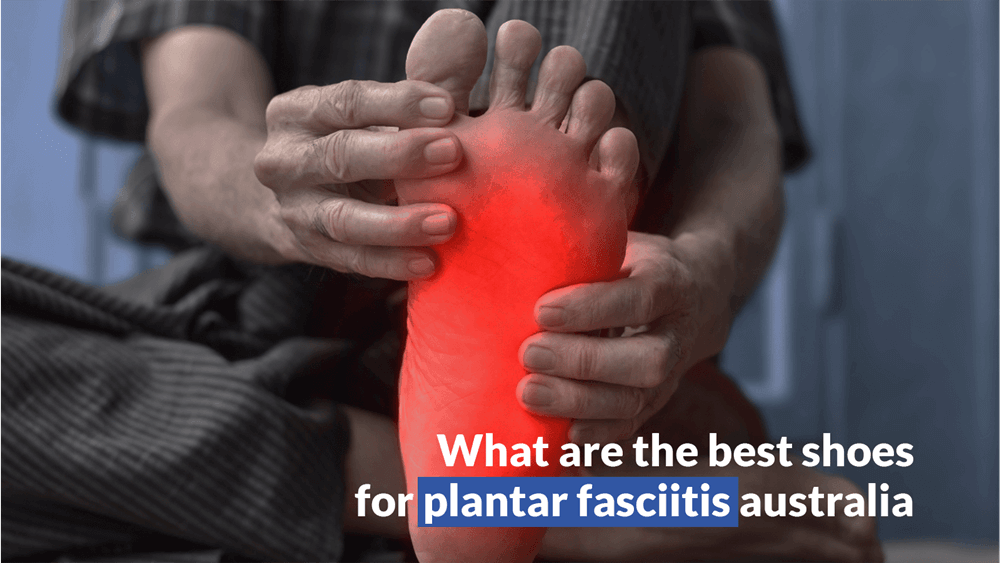Welcome to our Osteopath Sydney, by Dr. Phil Austin. Plantar Fasciitis is no joke, especially when it feels like your heels are staging a rebellion every morning. If you’ve ever experienced that sharp, stepping-on-a-glass-like pain, you’re among the 10% of the world’s population who encounter this pain at some point in their lives, which is a huge number btw!
Plantar Fasciitis isn’t some rare foot mystery; it’s like that uninvited guest that shows up and overstays its welcome. But guess what? Choosing the right shoes can help plantar fasciitis feel less horrible. Now, we’re not promising a magic cure, but we are shedding light on how the right pair of shoes can be your foot’s new BFF in this battle.
Today, we won’t throw jargon at you or dance around the facts. Let’s have a friendly chat about how to dodge this icky visitor.
What is Plantar Fasciitis Anyway?
Plantar Fasciitis isn’t handing out exclusive invitations; it’s crashing the foot pain party of more than a few Aussies. The impact? from walking to just standing – it gets a bit complicated.
“Plantar” is just a cute way of saying the sole of your foot. We plant our body weight on the soles, and there you have it – plantar.
Now, onto “Fascia.” Imagine it as the body’s connective superhero – the fibrous tissue that links bones and various body parts, ensuring everything stays in harmony.
This superhero works undercover, under your foot, ensuring a smooth ride as you strut through life. But, when life gets tough – a.k.a. the Plantar Fascia gets tired or injured – your foot becomes Ground Force Zero. The stress of each step hits your body, from your feet to your back and even your neck.
Plantar Fasciitis Symptoms
Now, let’s talk about symptoms. Plantar Fasciitis isn’t subtle. Here’s how it shows up:
Morning Heel Pain: Ouch! Your heel gets a not-so-pleasant wake-up call.
Contracted Fascia: Your fibrous friend feels a bit tight and inflexible.
Morning Hobble: Those first steps? More like a morning hobble until your foot decides to join the day.
Subsiding Pain: As the day rolls on, the pain takes a back seat, but it’s a persistent back seat driver.
Recurrent Morning Pain: It’s like a heel Groundhog Day, repeating its performance each morning.
Pain after Prolonged Rest: Your foot protests after breaks, making its discomfort heard.
What Are the Worst Shoes for Plantar Fasciitis
Sure, flat shoes like flip-flops or going barefoot might seem like freedom for your feet, but – it could be a Plantar Fasciitis setup. Why? Because going barefoot or sporting shoes without proper arch support is like sending your feet into a battle without armour.
Tight shoes and mega-heels mess with the plantar fascia. They mess up its moves, causing strain on the ligaments and tendons and the plantar fascia.
What Are the Best Shoes For Plantar Fasciitis
Arch supports and shock absorbers – the heroes. Your shoes should be more than just good looks; they should be foot bodyguards. Arch supports keep things in line, and shock absorbers soften your steps, saving your feet from hard surfaces.
Why It Matters?
Heel Support: Prevent excessive pronation with a firm heel cup or ample cushioning.
Arch Support: Look for shoes with built-in arch support or consider adding insoles for that extra love.
Rocker Bottoms: Not a necessity for everyone, but they can be a game-changer, especially when combined with orthotics.
Rotation and Contour: Rotate between two pairs of shoes to change the load on your feet. Contoured sandals can be a hassle-free option for casual wear.
Types of Recommended Shoes: Rocker Bottoms, Open Shoes, Joggers, Work Shoes, and More
Rocker Bottom Shoes: These shoes, like those from MBT or Hoka, can be your foot’s saviour. The curved sole eases the strain on the Plantar Fascia, providing relief and comfort.
Open Shoes/Sandals: While not ideal, contoured sandals like Crocs or Oofos can be your go-to for quick errands. They offer arch support, making them a better choice than flat sandals.
Joggers: Nike and Skechers lead the pack when it comes to jogging shoes. Look for excellent heel support, arch support, and even rocker bottoms for optimal comfort.
Work Shoes: Dr Scholl understands the struggles, offering comfortable, professional shoes with added features like rocker’s bottoms or increased arch support.
Public Favorites: Brooks and New Balance have a loyal following. Their running shoes are praised for heel cushioning, arch support, and overall foot comfort.
Boots: For those needing sturdy boots, Oboz could be your pick. While not designed specifically for Plantar Fasciitis, they offer great support and flexibility.
In Conclusion
Your journey to happy feet starts with the right shoes.
In exploring the optimal solutions for Plantar Fasciitis, scientific research has delved into the effectiveness of various footwear options. The findings emphasize the positive impact that different shoes can have on alleviating heel pain associated with this condition.
Rocker bottom shoes, for instance, have demonstrated their ability to reduce strain on the Plantar Fascia. Featuring a curved bottom that facilitates a rocking motion during walking, these shoes prove particularly beneficial. When coupled with orthotics, their efficacy in diminishing heel pain caused by Plantar Fasciitis is further enhanced.
Additionally, research has underscored the significance of sandals with arch support in reducing heel pain for those grappling with Plantar Fasciitis. Notably, contoured sandals with proper arch support have proven to be as effective as shoes equipped with orthotics for relieving heel discomfort.
In conclusion, the wealth of evidence from these studies supports the notion that selecting the right footwear plays a crucial role in managing Plantar Fasciitis. Individuals in Australia seeking the best shoes for Plantar Fasciitis can consider options like rocker bottom shoes, ultra-flexible running shoes, and sandals with adequate arch support based on their preferences and lifestyle.


